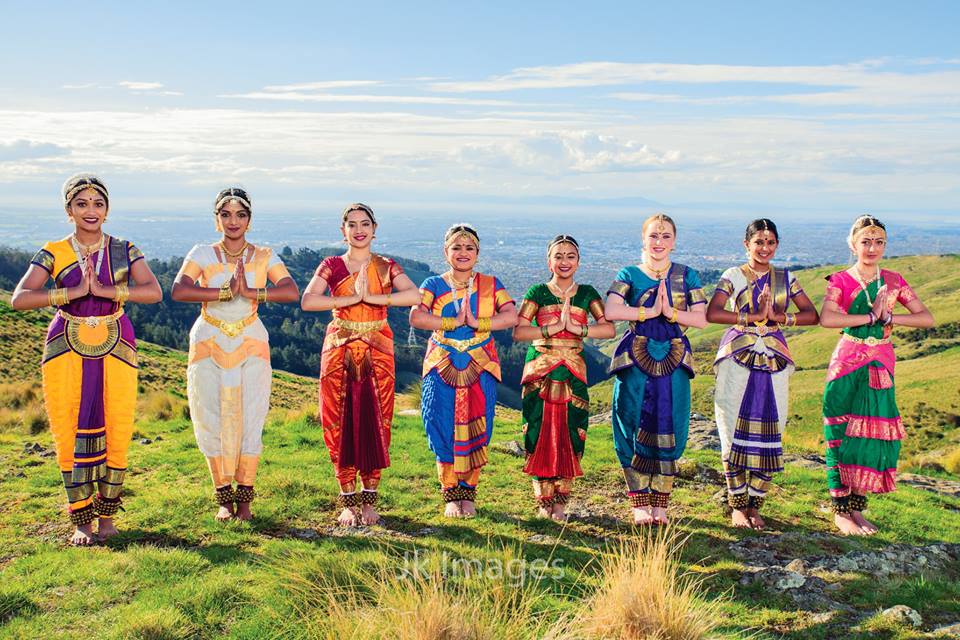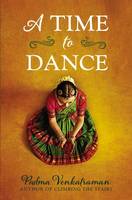Ever wanted to know more about classical Indian dance? Rema and Simon explain some of the philosophy and history behind Bharatanatyam ahead of a performance by local group Revathi Performing Arts.
Revathi Performing Arts
The purpose of Revathi Performing Arts is to encourage people to know that these dance routines can be practiced as an exercise for body conditioning, mental alertness, and building stamina. People from all walks of life come to learn and share the experience of being part of this classical Indian dance movement. Initially their performances, held at the end of the year, were largely for family and friends, in order to show case developing talent. Their first public performance was held in 2015. Their upcoming performance Mayuram - which celebrates Murugan (also known as Kārttikēya), the son of the Hindu god Śiva and his wife, Parvati - takes place on 5 August.
Dancing for the gods: the South Indian dance tradition
Bharatanatyam is one of the Indian classical and traditional dance forms from South India. It has its origins in sadir, the traditional dances performed by devadasis, young women who were ceremoniously married to the deity of a temple to which they had been dedicated as children. Such was the respect in which devadasis were held that kings were known to gift them grants of land. Two classical dramatists from the 2nd century have been credited with compiling the theory behind the dance form; Nandikeśvara, who wrote Abhinaya Darpaṇa (Mirror of Gestures), and Bharata Muni, who wrote Nāṭyaśāstra (Treatise on Dramatic Art).
Underlying these works was the concept of rasa, that dance should be means for the individual to transport themselves into a spiritual realm. This illustrative performance is portrayed by a dancer with excellent footwork, impressive gestures and facial expressions accompanied by song. A Bharatanatyam performance includes synchronized movement of eyes, neck, hands (mudras) and feet to depict various moods and expressions. The dancer must remember the whole song, and the associated rhythmic steps and moves, which need a higher level of concentration and coordination.
There are three forms of dance:
Nritta - Dance which is purely without expressions or emotion.
Nritya – Dance where emotion and expressions are conveyed through the use of hasta mudras (hand gestures, of which there can be up to fifty-five) and abhinaya (facial expressions).
Natyam – Dance which is included into a dramatic performance.
Decline and revival
The classical dances of the devadasis were brought by performers to the Thanjavur court in South India. Here, many artists, dramatists and musicians vied for the patronage of the kings. Among such dramatists to receive this patronage were the Thanjavur Quartet, four brothers who synthesised the various sadir dances in the early 19th century. However, the annexation of former South Indian kingdoms by the British in the latter half of the 19th century led to a loss of patronage for many of these dancers and dramatists.
Further damage was done to the dance tradition by Victorian notions of morality, which were being spread by missionaries. This colonial criticism was adopted by some prominent Indians who had received a Western education and led to the tradition losing its social acceptability. The criticism continued into the 1930s, with social reformer and women’s rights activist, Dr Muthulakshmi Reddy (1886-1968) launching a campaign against it. However, she was countered by Krishna E. Iyer (1897-1968), a lawyer, artist and political activist, who recognised the important role India’s dance traditions played in the movement to reassert Indian culture and independence. He argued against the colonial misinterpretations of the devadasi tradition and is often credited with forming the name by which the dance tradition is now known, Bharatanatyam.
Iyer was aided in his formulation of Bharatanatyam by Rukmini Devi Arundale (1904-1986), a young Brahmin who had rebelled against her upbringing by not only learning Western forms of dance, but also by marrying an Englishman. In 1935, she attended a performance of a form of dance known as Pandanallur, which has been formulated by the teacher Meenakshisundaram Pillai (1869–1964), who was himself a descendant of one of the brothers from the Thanjavur Quartet. From Pillai, Rukmini learned the forms of dance which had once been performed in the Thanjavur court, and later that year she performed at the Diamond Jubilee Celebrations of the Theosophical Society. In the following year, she established the Kalakshetra Foundation, an organisation dedicated to the revival of Bharatanatyam and its worldwide propagation.
If you wish to experience this dance, which has its origins in the temples and royal courts of South India, then come to Mayuram, from 7pm to 9pm at Cashmere High School Performing Arts Centre. For tickets and details please contact info@revathi.ac.nz
Rema (and Simon)
Find out more
- Revathi Performing Arts website
- Titles about the Indian community in New Zealand
- Find Indian dance groups in Christchurch (CINCH)
- Find articles about Murugan/Kārttikēya (accessible with your library card and PIN)
- The Pagoda Tree by Claire Scobie, a novel about a devadasi dancer set in 18th century India.
- A Time to Dance by Padma Venkatraman, a novel about a young Bharatanatyam dancer.
- Listen to Music Of Southern India.





Add a comment to: Revathi Performing Arts: Mayuram – Bharatanatyam in Christchurch